A Conversation with Timothy Archibald
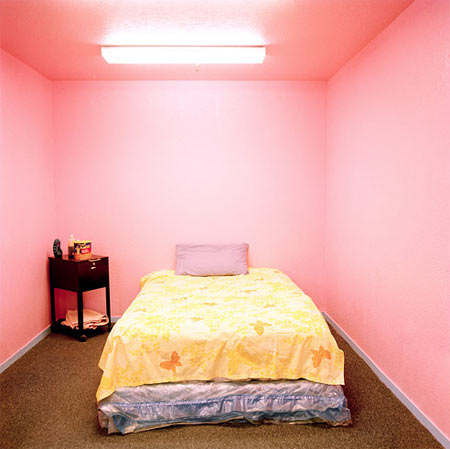
A while ago, Timothy Archibald’s book Sex Machines was released (see my review here), and since then I had been quite curious about how the book had been perceived and what Timothy’s experiences might have been. At the end of last year, Timothy wrote me a end-of-the-year email, and since he hinted at some unforeseen developments (I’m just going to call it that lest I spoil the following) I could not contain my curiosity any longer and asked him whether he was willing to talk about the project. I’m very glad to learn that he was.
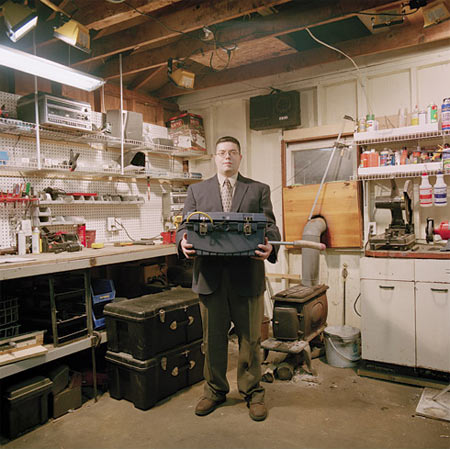
Jörg Colberg: I wanted to talk a bit about the project “Sex Machines” that you did. The reason is quite simple: It’s such an unusual topic - and such a charged one in a country like the US - that I have the feeling that every aspect might be quite interesting, with the actual sex machines probably the least interesting bits. So to start: How did you come up with the project? How did you get the idea? And how did you then get in touch with those inventors and persuade them to have their portrait and work shown in the book?
Timothy Archibald: To make money, I work as an editorial and commercial photographer. Around 2000 I had been making photographs in people’s kitchens, garages and messy middle class living rooms on various editorial assignments I was getting and almost had a series of people in these spaces, but it never amounted to anything grand enough or accessible enough. I had always been a fan of Bill Owens’ book “Suburbia” and I seemed to be making images that reminded me of his images a little bit. A random assignment put me in the garage of a guy who had invented a new form of foosball table. Here I was, in this guy’s garage, he is beaming with pride, telling me about his creation, and we are surrounded by all this junk of his life, his lawnmower, his exercise bike, and his wife is explaining that she can’t keep the car in the garage anymore, so they built a car port for her! All these details, mostly about the social dynamics that were involved with being an inventor, being on a mission, having a vision and single-mindedly bringing it to life were contained in his story. Most important to me were details about how it affected the family and the guy’s marriage. I then got it in my head to do a small project on guys like him, independent inventors working on bringing their dreams to life in the garages and backyards of America. I thought it would put me in spaces I liked to photograph with the type of people I liked to photograph. While researching that idea on the internet, I stumbled upon a group of inventors of Sex Machines.
At the time I had never really heard of a Sex Machine, but on this listserv these guys where sharing snapshots they had done of their machines… just as a way to share their creations. Those snapshots really took my breath away because they had everything I always wanted my own photographs to have. They showed rooms with details of the inventors lives, the mundane everyday qualities of living rooms, kitchens, garages, but then they had these truly otherworldly creations in them: these machines that were crudely mechanical, kind of threatening looking, and then with this human appendage on them… this phallus. I had always been interested in relationships, men and women, the ways they didn’t understand each other, things that photographers such as Arthur Tress and Duane Michaels had often allowed their photographs to explore. These machines just seemed so rich for interpretation, I thought they’d be great to photograph.
Unfortunately, the guys on this Sex Machine inventors list serve didn’t want to be photographed. It took me more than a year after that burst of enthusiasm to find someone to let me photograph their machine.
I had essentially given up on the project. By chance I crossed paths with these guys in SF who had a porn studio, making pornography of women and men using sex machines. I spent some time in their studio, photographed the machines, and realized something was missing. Real life, real people were missing, but I didn’t know how to find the real life. These two guys, the pornographers, were real smart, very perceptive, and kind of knew what I was looking for. They referred me to a few inventors who they thought would be open to my project. After meeting them, I kind of found a way into the world. With all documentary projects, it’s kind of like you need to find the person who is willing to be the ambassador to the world you are trying to gain access to. With Sex Machine inventors, everyone was independent, no one knew each other, but I eventually seemed to find various ambassadors into little niches of the world. And as the various inventors saw the work I was doing, they seemed to think it was cool, had some substance they could relate to, and wasn’t really erotic at all. Also, I got the feeling that these folks had never really gotten taken seriously before, so my attention seemed welcome.
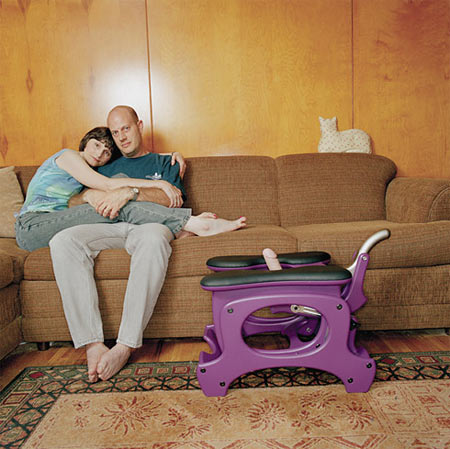
JC: I am sure you must have anticipated to run into some problems, though - or maybe you didn’t? Even though pornography has recently acquired some sort of mainstream acceptance - or maybe it isn’t really acceptance - with fancy portraits books of porn stars, I am tempted to think that most people, and not just in the US, still consider anything related to sex as something that you don’t want to talk about too openly, and especially not if it involves additional devices. When you worked on the project, did you not worry a little bit about how this work would be perceived?
TA: I had always been confused that when artists or the media did a project on sex, it was always shown with the face of pornography, or prostitution, but never with real average people. (The Valley by Larry Sultan, Porn Star Portraits by Timothy Greenfield Sanders, Sex in Asia by Reagan Louie) I mean everybody has sex! Pornography projects never really interested me, (although I did love The Valley) because I felt that pornography was theatre, it was all acting, all created, and I wanted to explore lives like mine, real peoples’ lives, people I could relate to. America is funny, though. It seems like pornography is OK to talk about, people love it when Howard Stern lusts after strippers, but when it comes to talking about one’s own sex life, or your neighbors sex life, it makes people uncomfortable. But I’m the same way, myself… I’m an American. But for this project, I just kind of got lucky tapping into this really well adjusted pool of people who were able to get comfortable and open up to me, in the photos but more so in the interviews.
My wife was studying sociology, and we had friends who were sociologists, and to them my project seemed to fit right in with some pop form of sociology… so I probably didn’t worry about perception as much as someone else would. That said, I never told my parents about the project until, probably, a few weeks before the book was in stores.
But for me, when I’m working on something, I really tend to get caught up in it. Working on Sex Machines, the book, with the publishers, who really got involved in the editing of the text, I think we really fell under this spell and believed that this book would be embraced by all of America, would most likely be as popular as Thomas Kincaid’s paintings, be on coffee tables throughout middle America, and certainly be featured in TIME and Newsweek. I think to push a project thru one often has to have un-realistic sets of beliefs like that. Of course, none of that happened! I remember sharing this idea with a friend who said… “well… for all of what you think will happen to happen; America will need to radically change its social norms. Do you think that’ll happen by the time your book is out?” Funny in retrospect.
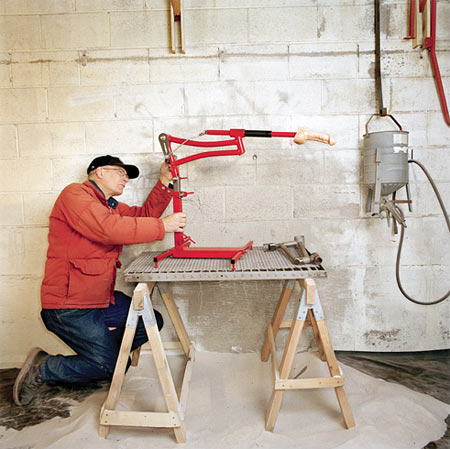
JC: And then, when the book came out, what reactions did you run into?
TA: My goal was to try to create this book about America, the spirit of invention, simple stories that explored the great divide between men and women…the confusion between the sexes. And…of course, I had these sensational machines to be the way in to tell the stories.
The book, as a whole, where the reader could see the images and read the interviews, really always went over well. We’d do events at bookstores, little slide shows and readings with some of the inventors in attendance, and they always went over great. It was like the fantasy I had of having an event, based around photography, accessible to the curious public, and nothing about technique or photography ever discussed! Like art for the masses! The events always went off great, and having the inventors in attendance made it all the more social. Like here… these are real people. You read about their inventions, you read about their sex lives, and here they are. Having them in attendance also made me feel good about the whole documentary quandary… am I studying down in class? Am I studying up? Do these people see themselves as I see them?
The problems arose… and for sure big problems, when I began using the images from the project to promote myself as a commercial photographer. I felt they were my most insightful, intelligent photographs, I had this book out and lots of press happening, was touring on a small level, why not use these images to promote my commercial career? I put together a large mass mailing to advertising agencies, design firms on my mailing list and the results were disastrous. It was a mass mailing originating from a mailing center on the west coast. We began fielding complaints and harassing phone calls and emails immediately. The first day we got three, all from California agencies, and thought it wasn’t so bad. A few days later a slew of calls from Utah, Denver, Texas. Then Chicago, Detroit. We realized that our mass mailing was simply getting to the Midwest and East Coast later, and the complaints were coming in as the recipients were getting their mail. It went on for roughly three weeks. Once the mailing hit New York, we got a some positive feedback. It was demoralizing, because I never tried to shock anyone, but I was fearing that maybe, after three years in the Sex Machine world, my moral compass was off. Hate filled phone calls, furious emails, to hear the anger and rage in someone’s voice on various phone messages people left was very intense. These images angered people, or at least seeing the images showing up in the mail in an office environment angered them greatly. This also was the first time the images were presented without the accompanying interviews, which may have changed people’s perceptions about them greatly. It was strange that I wanted some type of commercial acceptance of this project, but for some reason, that is what I wanted.
Another problem, career wise, was that I found I was really intoxicated my this sense of authorship doing the book gave me and found it hard to get motivated by the editorial assignment work that I did for a living. In photography, enthusiasm is like 99% of the success of something. I wasn’t into doing assignments, the quality of my work plummeted, and here I was, mass mailing images of giant phalli across the US as a way to redeem my business. 2006 was essentially both a glorious and very hard year.

JC: It never occurred to you that many people might have a problem with getting something in the office mail that includes photos of artificial phalli?
TA: Nope, the thought really never occurred to me. Up to that point, the project had essentially been a crowd pleaser. When I began the project I was always waiting for some harsh reaction, I was always waiting for someone to tell me this has crossed some line or something, but it seemed like it was always being accepted and really opened doors for me. In its early stages and later, it got some mainstream attention, though mostly not in the US: I sold the project to Esquire UK, then it was rep’ed by Redux Pictures, then FotoPozytw in Poland did a 9 page spread. The idea of a book of the project started building momentum and it attracted Jodi Wille and Adam Parfrey, two editors whose work I had always admired. We got legendary photo critic A.D. Coleman to write the forward. The project really seemed to attract some really great people. So why should I try to hide it from the commercial photography world? That was my thinking.
JC: It must be quite frustrating to spend a lot of time on a project, published in a book, which creates a lot of good feedback, and then to realize that that kind of photography - done in the best editorial fashion - is more or less unusable in the US (excluding New York), because people get upset. It could also be quite discouraging for photographers who rely on editorial work: Why spend a lot of time on a project that is potentially (or even very likely) quite controversial when you can’t use the images to promote your services as a photographer?
TA: Thinking back, I think I embraced the Sex Machine project so intensely in the beginning because I was tired of simply being a working photographer. I had always thought of photography as something more in my life, more like a path, not really like a job, and it had begun seeming an awful lot like a job. The tricky thing in photography is that it is a way to make a living, but it also is so much more, or it can be if you want it to be. So the idea that this project was this kind of double edged sword probably appealed to my subconscious at the time… like a way to do great work and give the finger to the business of photography. Now that I’m thinking about it, I think I had a nickname for the project that was something like “The Commercial Suicide Series”.
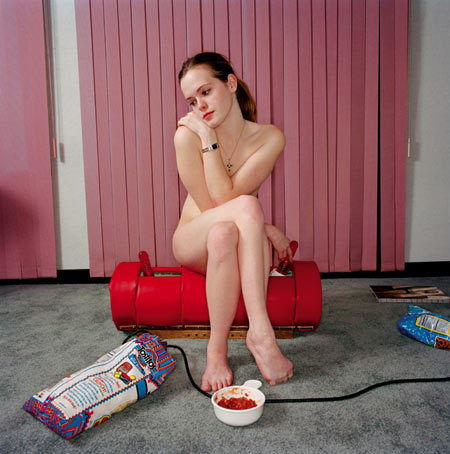
JC: So, in retrospect, would you do the project again if some time machine dropped you off at a point in time where the project was just in its planning phase?
TA: For sure, no question I’d do it again. I always kind of felt that in music, art, movie making, there is always a theme or topic that allows the artist to say everything they’d been hinting at saying in their work. For me, I kind of thought I found that topic, for better or worse, with Sex Machines. Probably not what I envisioned for myself or my work years earlier, but it allowed me to create this thing that had some anthropological depth to it, but was also alluring enough that I got a lot of people to pay attention to it.
As a working photographer, doing the project acted like a weeding out device in a way. It attracted certain people to me, who seemed to really get the project and want to work with me, and repelled others away from me, who did not. That could be said for my social circle as well as career, I guess. I’ve met some super artists since putting out the book, no question there.
I think the big dilemma now is what to do next. A gallery director at Photo LA advised me to be really careful about the next project… maybe steer clear of anything sexual so as not to end up categorized as some sexual culture guy. While working on the project I did stumble upon this other sexual subculture that I was almost equally fascinated with, and started researching it, thinking it would be the next book project. Then… put the brakes on it. Maybe save it for three projects from now. But not right on the heels of Sex Machines. I was always telling people “look, this is sociology, not sexuality”. So with my next project I think I need to find a way to send that message home even clearer.
JC: Given that you consider the project to be mostly sociological, I’m sure having worked on it for a considerable amount of time and having experienced lots of different things after the book came out and after you tried to use the images to promote your work what did you learn from the project? From what you said, I have the feeling that you got a good deal out of the project, probably quite a bit more than you had anticipated.
TA: Oh, the process of working on a long project and collaborating with super smart people to make it a book is really priceless, such a great opportunity. And then it is like dropping a rock in the water and seeing what waves come off of it… lets see who embraces this thing, lets see who hates it, lets see who ignores it… it is fascinating. Probably the more workman-like thing that I’ve learned has to do with really keeping my personal projects and my commercial work in separate compartments. Let art work stay pure and un-polluted and let the commercial work stay that way as well. Don’t expect the art work to make a ton of money, but don’t expect this grand sense of authorship to blossom out of commercial work either. But for me, I need both of these things and they both feed each other. And all the things in between.
 By
By